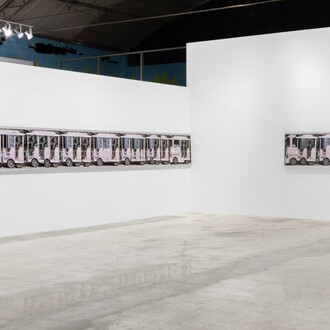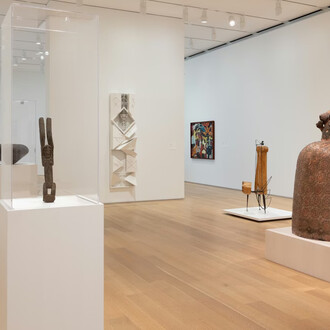Hua Gallery, is delighted to present a selection of paintings from Lu Xinjian’s unique City DNA series. Internationally acclaimed Lu utilizes Google Earth satellite imagery to capture the structural essence of cities around the world, before meticulously translating these images to large-scale canvases.
Hua Gallery specializes in the exciting space that is Chinese contemporary art. Hua Gallery represents and exhibits cutting edge, stimulating works by established contemporary Chinese artists, as well as emerging contemporary Chinese artists who are not as yet internationally recognized. Situated on the Albion Riverside, Hua Gallery is London’s only Chinese contemporary art gallery with a permanent exhibition space of this size and scale.
Lu Xinjian's series of City DNA paintings from 2009 onwards are based, as the artist has explained, on the satellite's eye view of various cities that Google Earth provides. However, these abstract renderings of aerial cityscapes have a tenuous link to their Google Earth counterparts. The viewer has to work quite hard to see the comparable features, have some foreknowledge of the coordinates and altitudes the artist used and be familiar with the cityscape in question. The paintings actually resist such cartographical comparison. Markers in satellite/map images which aid comparison are carefully removed: there are obviously no labels or framing information; the background appears as a continuous monochrome; natural and built features are described in the same way; all the lines are equally discontinuous, and are often monochrome too (where colour variations appear they are arbitrary); the only discernible boundaries are those of the painting (the cityscapes aren't contained in the painting).
Each painting evidently starts from something like a Google Earth image and works towards an image which has its own aesthetic integrity, defined by its frame, its juxtaposition of colours, its scheme of broken lines, and so on. The aesthetic integrity of the paintings tests their connection to empirically imaged cityscapes: there is a visual connection, but this connection is subdued by the internal dynamics and balance of the paintings. The paintings are not simply based on aerial images of cities; the paintings are more a transformation of those images into artifacts.
In Lu's City DNA paintings, there are no regularities and patterns and grids and lights and flows – the defining features of the cities are dispersed into a density of broken lines which disorientate the viewer. The only choice the viewer has is to hold on to the stabilizing effect of aesthetic choices that are not of the cities depicted, but that are offered in the design of the artwork: the arbitrarily chosen colours, the aesthetic integrity of the surface of the painting as painted surface. In these, the artist/viewer draws away from the city.
In this context, the City DNA series makes perfect sense as a distinctive contribution to a larger artistic sensibility. That all the cities it depicts in individual paintings seem indistinguishable within the series makes sense. The dizzying effect of the dense and discontinuous and anti--‐symmetrical lines makes sense. The retreat into the artistic integrity of abstract principles of colouration and framing and design, which liberate city paintings from the cartography and brands of specific cities – that makes sense too.
Excerpts from Lu Xinjian’s City DNA: Beijing CBD and the Universal Metropolis By Prof. Suman Gupta















